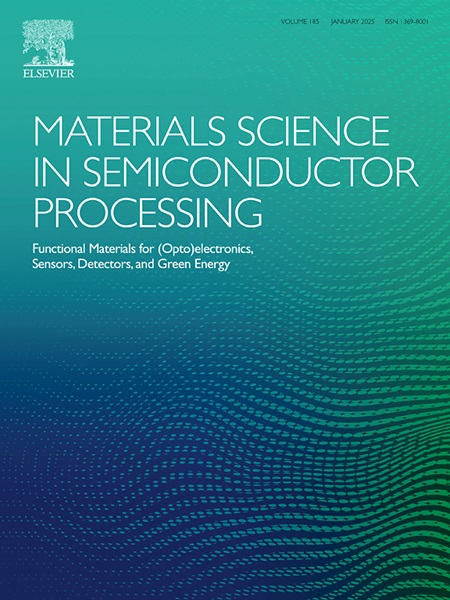LaTaON2 insights, from synthesis to photocatalytic and photoelectrochemical applications; a review
IF 4.2
3区 工程技术
Q2 ENGINEERING, ELECTRICAL & ELECTRONIC
引用次数: 0
Abstract
Research surrounding new photocatalytic materials is an area of continuous growth, especially in the development of light-harvesting semiconductors capable of absorbing irradiation in the visible-light range to carry out diverse photocatalytic processes such as the water-splitting reaction, decontamination of dyes and drugs present in water, and CO2 and NOX photoreduction. Advanced materials such as oxynitrides have emerged in recent years due to their interesting properties and diverse applications; however, their physicochemical properties and relation with optical and photocatalytic applications are still an emerging study area, which has revealed oxynitrides are photoactive materials capable of performing the above-mentioned reactions. Among this group, the perovskite oxynitride LaTaON2 is one of the more recent and less studied materials. The global literature is limited to less than 40 research articles, which makes this material worth studying since it has gained attention as a promising photocatalyst for water-splitting reactions despite the scarcity of studies in the literature. Therefore, this review aims to collect and analyze the available information on LaTaON2, highlighting its synthesis methods, uses, applications, and photocatalytic enhancement strategies to facilitate future advancements and applications of the mentioned material for energy generation and environmental remediation.
LaTaON2从合成到光催化和光电化学应用的见解回顾
围绕新型光催化材料的研究是一个不断增长的领域,特别是在能够吸收可见光范围内的辐射进行各种光催化过程的光收集半导体的开发,如水分解反应,水中存在的染料和药物的去污以及CO2和NOX的光还原。氮氧化物等先进材料由于其有趣的性质和多样化的应用,近年来出现了;然而,它们的物理化学性质及其与光学和光催化应用的关系仍然是一个新兴的研究领域,这表明氧氮化物是能够进行上述反应的光活性材料。在这类材料中,氧氮化钙钛矿LaTaON2是最近研究较少的材料之一。全球文献的研究文章不足40篇,这使得这种材料值得研究,因为尽管文献研究较少,但它作为一种有前途的水分解反应光催化剂受到了关注。因此,本文旨在收集和分析有关LaTaON2的现有信息,重点介绍其合成方法、用途、应用和光催化增强策略,以促进该材料在能源生产和环境修复方面的进一步发展和应用。
本文章由计算机程序翻译,如有差异,请以英文原文为准。
求助全文
约1分钟内获得全文
求助全文
来源期刊

Materials Science in Semiconductor Processing
工程技术-材料科学:综合
CiteScore
8.00
自引率
4.90%
发文量
780
审稿时长
42 days
期刊介绍:
Materials Science in Semiconductor Processing provides a unique forum for the discussion of novel processing, applications and theoretical studies of functional materials and devices for (opto)electronics, sensors, detectors, biotechnology and green energy.
Each issue will aim to provide a snapshot of current insights, new achievements, breakthroughs and future trends in such diverse fields as microelectronics, energy conversion and storage, communications, biotechnology, (photo)catalysis, nano- and thin-film technology, hybrid and composite materials, chemical processing, vapor-phase deposition, device fabrication, and modelling, which are the backbone of advanced semiconductor processing and applications.
Coverage will include: advanced lithography for submicron devices; etching and related topics; ion implantation; damage evolution and related issues; plasma and thermal CVD; rapid thermal processing; advanced metallization and interconnect schemes; thin dielectric layers, oxidation; sol-gel processing; chemical bath and (electro)chemical deposition; compound semiconductor processing; new non-oxide materials and their applications; (macro)molecular and hybrid materials; molecular dynamics, ab-initio methods, Monte Carlo, etc.; new materials and processes for discrete and integrated circuits; magnetic materials and spintronics; heterostructures and quantum devices; engineering of the electrical and optical properties of semiconductors; crystal growth mechanisms; reliability, defect density, intrinsic impurities and defects.
 求助内容:
求助内容: 应助结果提醒方式:
应助结果提醒方式:


